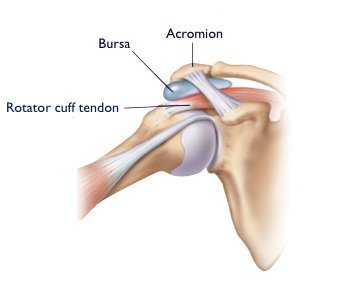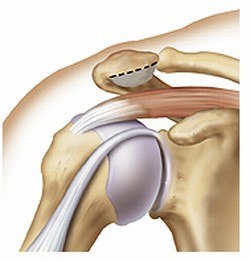What is it Impingement?
The shoulder is made up of three bones: the upper arm bone (humerus), the shoulder blade (scapula), and the collarbone (clavicle).
The rotator cuff is a group of tendons that form a covering around the top of the humerus and hold the bones of the shoulder joint together.

Between the rotator cuff and the top of the shoulder (acromion) there is the subacromial space which is filled with a lubricating sac called a bursa. This fluid sac allows the rotator cuff to glide freely when the arm moves.
Subacromial Impingement is a condition where the rotator cuff tendon is pinched between the humeral head and the undersurface of the acromion.
What are the causes of impingement?

Several factors can contribute to subacromial impingement. For example, some people are born with a curved or hook-shaped acromion that narrows the subacromial space leaving less room for the rotator cuff and bursa to glide.
With aging, development of AC joint arthritis and bony projections underneath the acromion can also narrow the subacromial space making more likely the rotator cuff tendon and bursa to get pinched during shoulder motion.
Another factor is inflammation. Overuse or repetitive irritation of the rotator cuff underneath the acromion can lead to inflammation and swelling of the rotator cuff tendons and the overlying bursa. Not only theses structures are painful, but pain is aggravated when they get pinched underneath the acromion during overhead motions.
What are the symptoms?
Patients with impingement typically experience gradual pain in the front or the side of the shoulder that is aggravated by reaching or overhead activities. Sometimes the pain radiates down into the upper arm. Night pain and difficulty sleeping on the affected shoulder are also common complaints.
What is the treatment for impingement?
Surgery is not necessary in most cases of shoulder impingement. But if symptoms persist despite adequate rest, painkillers, physiotherapy and steroid injections, then surgery may be necessary.
 Loading...
Loading... 


 Arthroscopic
Arthroscopic



